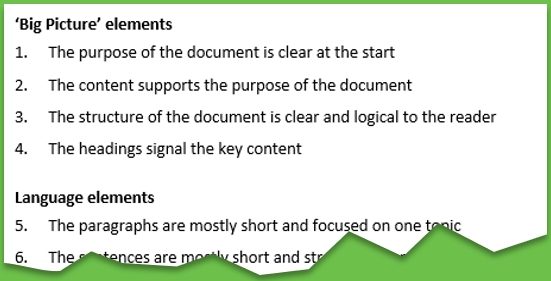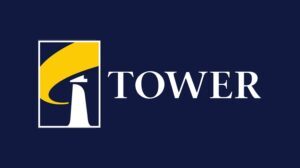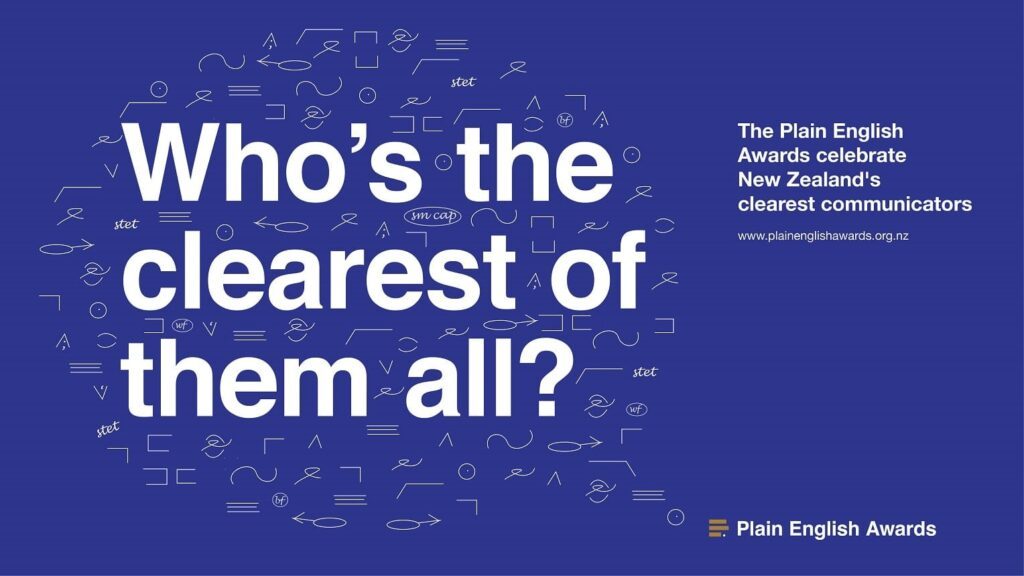WriteMark
Plain Language Standard
How does the WriteMark® compare to a new international standard?

We’ve mapped out how the WriteMark sits next to the new ISO Standard. We wanted to be sure our mark of plain language quality aligns with international best practice. And we wanted to understand where and why the two standards differ | Photo by Alexander Suhorucov on www.pexels.com
In June 2023, the International Organization for Standardization, or ISO, released Part 1 of its first-ever Plain Language Standard. The ISO Standard offers guidelines for writing in plain language, arranged around four organising principles. These establish that information should be relevant, findable, understandable, and usable.
Read our blog about the ISO Standard over on the Write website
How does the WriteMark® Plain Language Standard, developed here in Aotearoa New Zealand, compare to the new international standard? Do the two standards have any disagreements?
If your document holds the WriteMark®, does it also meet the criteria in the ISO Standard?
Is the WriteMark® keeping pace with international best practice?
Let’s answer those questions one by one.
Comparing the WriteMark® to the ISO Standard
As we pointed out in our blog post on the Write website, the ISO Standard doesn’t include quantitative measures. It doesn’t give users a way to certify documents that ‘meet the standard’.
So, right off the bat, the ISO Standard does something quite different from the WriteMark®.
The WriteMark® logo shows that we have assessed a document and we recognise its excellence in clarity and presentation. The WriteMark® uses 25 criteria to evaluate whether or not a document or website meets a high standard of plain language.
But although they have different purposes, the guidelines in the ISO Standard broadly align to the criteria in the WriteMark®.
Here’s an example.
- Guideline 5.2.4(a) in the ISO Standard says to ‘Use a new heading when introducing a new topic’.
- To achieve the WriteMark®, a document must have ‘useful, informative headings to guide the reader’.
The ISO guideline is more specific, but the WriteMark® requirement captures the same intent.
Many of the ISO Standard guidelines go into more detail than the WriteMark® criteria. The WriteMark® simply asks if a document’s structure is ‘clear and logical to the reader’. The ISO Standard, in comparison, recommends:
- placing the most important information first
- separating supplementary information
- presenting instructions in chronological order
- and several more specific guidelines.
These guidelines are all part of a ‘clear and logical’ structure. The guidance in the ISO Standard and requirements of the WriteMark® aren’t at odds — they’re doing different things, at different levels of detail.
The ISO Standard emphasises a different purpose
The ISO Standard and the WriteMark® do, however, place emphasis in different areas. These differences are worth exploring.
The first area is the document’s ‘purpose’. For the WriteMark®, a document needs to have a clear purpose, and its content needs to support that purpose.
Makes sense, right? We know that documents are most effective when they’re written with a clear goal in mind.
The ISO Standard, however, strongly emphasises the purpose of the reader. Writers should identify their reader’s purpose for reading their document, and put their readers’ needs first.
This also makes a lot of sense! Clear plain language documents put their readers first.
So which perspective is correct? Successful documents will fulfil both their readers’ and writers’ purposes. They’ll achieve what their author needs them to, while being entirely transparent and practical for readers to use.
The question is whose purpose is front of mind, and when. And that will depend on your document, your audience, and, of course, your own purpose for writing.
We explore this question further in another blog on the Write website:
Comparing the ISO Standard to the Plain Language Act and Write Plain Language Standard
The ISO Standard brings elements together under an umbrella of ‘cohesive’ writing
Another distinction between the ISO Standard and the WriteMark® is in the idea that documents are ‘cohesive’.
The third principle of the ISO Standard, ‘understandable’, covers what we often think of as ‘language elements’. This means using familiar words, short and active sentences, concise paragraphs, and a reader-friendly tone.
The ISO Standard then collects these elements, along with the structure and headings from the principle of ‘findable’, under an overall direction to ‘Ensure that the document is cohesive’.
This means, in short, make sure all the parts of the document work together. They have clear and consistent relationships. They all serve a common purpose.
Unlike the ISO Standard, the WriteMark® doesn’t have any one particular requirement for documents to be cohesive.
We’re already looking at how the elements of a document cohere throughout the WriteMark® process. In a WriteMark® assessment, we are checking that the words have a cohesive tone, that the structure presents a cohesive whole, and that the presentation elements are consistent and appropriate.
The guidance to write cohesive documents is handy, but as a requirement in the WriteMark® it would only duplicate other elements we’re already assessing.
Does a WriteMark® document meet the ISO Standard?
A document can’t ‘meet the ISO Standard’, because the ISO Standard is a set of guidelines, not requirements. But let’s put that technicality aside and rephrase the question in a way that we can answer:
Does a WriteMark® document have the same quality of plain language as a document developed using the ISO Standard guidance?
To that we can confidently say, ‘yes’. Documents that achieve the WriteMark® will also satisfy the ISO Standard’s organising principles. WriteMark® documents are all different, but each one is:
- purposeful and reader-focused to ensure information is relevant
- organised and structured to make information easy to find
- welcoming and clearly written to make information easy to understand
- practical and concise to make information easy to use.
And this relationship goes both ways. If you follow the guidelines in the ISO Standard, you’ll develop a document that’s well on its way to meeting the WriteMark®.
Again, we can find some differences in the details, but the two standards are well aligned overall.
For example, to achieve the WriteMark®, a document must use mostly positive sentences. The ISO Standard doesn’t mention positive or negative sentences — possibly because it applies across languages, not just English. But its instructions to write concise sentences with a clear structure will ensure they are also mostly positive.
Updating the WriteMark® to keep pace with international best practice
We want to be certain that the WriteMark® reflects the best practice in plain language, which means updating it from time to time. The ISO Standard finally arriving after years in the making has been a good prompt for us to make some tweaks.
Following the emphasis in the ISO Standard, we’ve added a cue to the WriteMark® assessment to note a document’s purpose and audience. This gets us and our clients thinking about the ISO Standard principle of ‘relevant’.
It’s a reminder to consider:
- who you’re writing for
- your readers’ context when encountering your document
- what you and your readers hope to achieve with this document.
We’ve also added a reminder to the assessment about making documents cohesive. This notes that a document is cohesive if its language, presentation, and big picture elements all support its purpose and the purposes of its readers.
And we took this opportunity to align the wording in some of the WriteMark® criteria more closely with Write’s Plain Language Standard, just to keep things tidy.
More resources
Download Write’s Plain Language Standard for free
Learn about the WriteMark® criteria and assessors
Buy a copy of the ISO Plain Language Standard
Ryan Tippet July 3rd, 2023
Posted In: Plain language, The WriteMark
Tags: clear communication, guidelines, industry standards, International Organization for Standardization, ISO, ISO Standard, plain language, Quality writing, the WriteMark
Reaching a plain language standard helps you reach your audience

Aim high — achieving a plain language standard will help your document work for your readers
An international colleague asked us about our two plain language standards:
Is the Write Plain Language Standard the same as the criteria for assessing a document and giving it the WriteMark®? Or are the Standard and the WriteMark® two different and separate tools?
Here’s how the two Standards came to be, how they relate to each other, and how they’re different.
The Write Plain Language Standard is available for all to use
The 10 elements in the Write Plain Language Standard are a highly condensed version of the 28 elements in the WriteMark® Plain Language Standard.
The WriteMark® came first, and only documents assessed by our approved assessors can carry it. Several years later, because our clients wanted a standard they could apply themselves, we created a shortened form.
This shorter, easy-to-use standard became Write’s Short Plain English Standard. We’d customise it specially to suit our clients’ specific needs. And clients would often include their standard in their style guide.

Aim high — achieving a plain language standard will help your document work for your readers. Image by Write Group Limited
Eventually we made the short form (now called the Write Plain Language Standard) freely available under a Creative Commons licence. Anyone can use it to check and improve the quality of their writing.
We often use the Write Plain Language Standard as an audit tool. Our clients want to understand how their writing measures up against widely accepted plain language criteria.
Download the Plain Language Standard at the Write website
The WriteMark® is a mark of document quality available by assessment
We use the WriteMark® criteria when an organisation wants to show that their document has been independently assessed as meeting a very high standard of plain language. Achieving the WriteMark® gives them the right to display the WriteMark® logo — seen as a quality mark — on their document.
WriteMark® Plus is another option we’ve recently developed. It combines the WriteMark’s® elements-based assessment with document user-testing. We or another approved testing agency will test the document with readers who match the profile of the target reader.
Many clients now prefer to achieve the WriteMark® Plus, which demonstrates an even greater commitment to plain language.
Read about an insurance policy that achieved the WriteMark® Plus
Read about a legal document that achieved the WriteMark® Plus
Get in touch if you’d like to know more about the WriteMark®
Lynda Harris November 10th, 2020
Posted In: The WriteMark
Tags: industry standards, plain language, the WriteMark, Write
It’s always clear when it’s Summer

It’s always clear when it’s Summer KiwiSaver. Image by David T / Unsplash licence
Forsyth Barr is celebrating Summer this week. Their Summer KiwiSaver scheme’s product disclosure statement (PDS) is shining bright because it has again met the WriteMark® Plain Language Standard. The Summer KiwiSaver PDS is now in its fifth year of reaching this sought-after confirmation of clarity.
The PDS has new content to reflect both legislative changes and changes to risk indicators for some of the scheme’s funds. Investors can still easily learn about how the Summer KiwiSaver scheme works, its risks, and what rights they have when investing.
Trish Oakley, Head of Summer, is determined to keep the standard of clarity high.
The WriteMark® shows our continued commitment to plain English and to making KiwiSaver easy for our members to understand. That way they can make informed decisions.
Each time the document changes, we’ll make sure it continues to hold the WriteMark®. That shows our commitment to transparency and accessibility.
Investing can be straightforward,
not complex
Like the team at Summer, we think clear writing in financial documents is important to help consumers make good investment decisions. You shouldn’t have to be a financial expert to be able to understand the financial information that affects you.
In a field that’s known for complexity, issuing a really clear statement about your product has far-reaching effects. A financial institution can build trust and goodwill by communicating clearly with its customers. And that’s a bright outlook for all of us.

Lock in clarity by getting the WriteMark® on your documents. Image by Daniel Park / Unsplash licence
Discover resources to help you write clear financial documents
How can you get started on creating a clear financial document? Our evergreen advice is to consider your reader’s needs and put yourself in their shoes.
Think about the purpose of your document. Explore ways you can convey complex information simply, so that people who are not financial experts can understand your writing. You’ll find lots of helpful tips in our easy-to-use checklist — the Write Plain Language Standard.
Download Write’s free Plain Language Standard
Download Write’s free ebook Unravelling Financial Jargon
Check out the Financial Markets Authority’s glossary of financial terms on the FMA website
Find out more about getting a WriteMark® assessment
Anne-Marie Chisnall August 20th, 2020
Posted In: WriteMark Holders
Tags: clear language, financial documents, industry standards, KiwiSaver, Legal documents
Help! My appurtenance is on fire!

Avoid adding fuel to the fire with complicated communication. Image by Little Visuals. Pexels license.
When something catastrophic happens at home, you need to act fast. Can you imagine trying to get help like this?
“I need to undertake a disclosure with you. I’ll give you the full particulars. A bodily injury has occurred directly or indirectly. And I’m worried about the remediation. Can I priority request you and your apparatus be utilised to assist with the contamination damage?”
These convoluted phrases pepper real insurance documents. But when people need to understand what’s covered and how to make a claim, they need clear, accurate information that’s easy to navigate.
We’re thrilled that more insurance companies are taking this seriously.
Some companies are working hard on their legalese, rewriting dense, internally focused policies, forms, and letters so they are easy to read, easy to understand, and written for the reader rather than the writer.
And each year a few more make the WriteMark® grade.

Congratulations to Tower for achieving the Write Mark and becoming a plain language champion! Image by Tower Insurance.
Tower Insurance is on a mission
Tower Insurance is one of the latest. Tower’s recent commercials proudly proclaim that they now have the WriteMark® on 14 home, contents, and vehicle policies. Their campaign dismantles difficult words and shows the difference straightforward language can make.
Words for work, or words for wonder?
Tower’s image of the word ‘appurtenance’ exploding symbolises their mission to simplify insurance.
And it had us scratching our heads.
Because, even though our WriteMark® assessors include authors, linguists, editors, teachers, and all-round word nerds, many of us didn’t know what ‘appurtenance’ meant.
These are people who send emails headed ‘Noun string of the day’, and can spend half an hour discussing the subtle difference between ‘moved home recently’ or ‘recently moved home’. They savour the richness, elegance, and (let’s be honest) perverseness of the English language.
We can all appreciate that ‘appurtenance’ is a lovely-sounding word with a fascinating etymology.
First known use of appurtenant
14th century
History and etymology for appurtenant
Middle English apertenant, from Anglo-French appurtenant, present participle of apurtenir to belong — more at ‘appertain’
History and etymology for appertain
Middle English apperteinen, from Anglo-French apurtenir, from Late Latin appertinēre, from Latin ad- + pertinēre to belong — more at ‘pertain’
But we’re also citizens and policy holders, who need to find our way through important information, often under stress. In times like these we want clarity, not a linguistic lift. We want information where writers have put the effort in to help us make decisions and take action.

There’s a time for tea and poetry and a time for getting the information you need. Image by Suzy Hazelwood. Pexels license.
Excellence for effort and an effort for excellence
We know it’s not straightforward, and companies that have reached the WriteMark® Standard for some documents deserve recognition for their courage and commitment. And once one or two documents have met the Standard, it’s very easy to spot those that still need work.
Congratulations to Tower!
But what does ‘appurtenance’ mean?
In home insurance, an appurtenance is a piece of property associated with the main dwelling. For example, it includes the garden and trees, and other structures on the property such as garages, decks, and swimming pools. It also includes items that are in some way part of the house, such as air-conditioning units, furnaces, and septic systems.
— many of which could catch on fire!
Anne-Marie Chisnall October 29th, 2019
Posted In: The WriteMark, WriteMark Holders
Tags: clear language, clear thinking, clear writing, improved writing, industry standards, plain language, power of plain language, Quality writing, Tower Insurance, writing for the public
Clarity is the heart of the matter

Long roads can read to beautiful destinations.
Australia’s Budget Direct Insurance is always looking for ways to set itself apart from the competition. In 2017 the company identified the opportunity to improve the overall customer experience, by creating the easiest-to-understand Home and Contents Product Disclosure Statement (PDS) in the marketplace.
After a highly worthwhile journey — that took a little longer than expected — the new PDS was published this week. And it became the world’s first document carrying the heart with a tick — not just the prestigious WriteMark®, but the ultimate WriteMark® Plus.
What is the WriteMark® Plus?
When a document or website holds the WriteMark®, customers know that the writing meets a very high standard of clarity. Experts have evaluated the writing against rigorous criteria, emphasising the needs of the audience. The WriteMark® Plus includes testing the document with the intended audience.
Each journey begins with a single step
By mid-2018, Budget Direct had spent 12 months gathering information about the challenge ahead:
- analysing PDSs available to consumers
- running workshops with the business
- analysing their current document
- considering potential regulatory reforms.
Struggling to find good examples to follow, they extended their search. They saw that Tower in New Zealand had won an award in the Plain Language Awards. They phoned us to ask who did our type of work in Australia. ‘We do,’ we told them. Two of our consultants travelled to Brisbane to talk about Budget Direct’s vision for the document and how we could help.
The road is long, and good things take time
The project involved a lot more than a simple rewrite. For the change to be permanent, Write and the project team at Budget Direct needed to bring the rest of the organisation along with them.
Legal and compliance teams had to be satisfied that the changes reduced risk rather than introducing it. Systems and processes had to change with the new content. Every piece of content needed to be tracked through each stage of writing, review, editing, and testing.
Fortunately, Budget Direct took the time they needed to deliver the best result.
Difficult roads often lead to beautiful destinations
After lots of hard work, the Budget Direct PDS for the Home and Contents Policy is at last ready to take its place in the market. It’s now easy to read, understand, and act on. Insurance customers have endorsed the change. And the policy carries the WriteMark® Plus to confirm all that care has paid off.
Budget Direct told us at the start of the project that success is when customers say, ‘Wow! I didn’t know insurance could be this easy.’
‘Write made it easy. Customers now have a quality PDS that’s easy to read and understand. Our consultants love it because they can now have more informative conversations and deliver greater value to our customers.’
That was Write’s goal. That’s why we’re proud to have given Budget Direct a document with heart.
Check out Gusto, the wonderful designers who worked on the document.
Explore the design in Gusto’s portfolio of recent work
And you can view the whole document at the WriteMark® holders page.
Anne-Marie Chisnall September 13th, 2019
Posted In: WriteMark Plus
Tags: Budget Direct, clear language, clear thinking, clear writing, improved writing, industry standards, plain language, power of plain language, Quality writing, writing for the public
Win–win for writers and readers

Working together to bring clarity out of confusion. Image by Adi Goldstein. Unsplash licence.
What’s better than a ‘force for good’ advancing the quality of communication for everyday New Zealanders?
Two forces for good.
WriteMark® is the founding sponsor of New Zealand’s Plain English Awards — a celebration of clear communication and a public pat on the back for plain English champions.

Recognising the highest-quality communication
For 14 years WriteMark® has backed the Plain English Awards Trust to fund, organise, promote, host, and celebrate the annual Awards. The Awards recognise commitment to clear language on all scales — whether it’s across an organisation as a whole or down to a sentence that shines.
But it’s not just about wiping out the waffle. It’s about everyone’s right to take part in society. Information needs to be easy to read, understand, and act on — for all of us.
Making a real difference
The effect of WriteMark® joining forces with the Plain English Awards has been profound. Feedback has shown that the Awards:
- are highly valued by entrants, winners, judges, and sponsors
- offer a benchmark for organisations to assess their own performance
- have resulted in positive, meaningful change in communications for all New Zealanders
- can transform organisations — the process leading to success in the Awards has created widespread change for some organisations.
Working together for all
A piece of communication displaying the WriteMark®, or that has won a Plain English Award, shows the world that writers have thought carefully about their readers. And it shows readers that they can expect to easily understand and act on the information in front of them.
Now that’s a winning combination.
Anne-Marie Chisnall September 11th, 2019
Posted In: Plain English, Plain English Awards, WriteMark Holders
Tags: clear language, clear thinking, clear writing, improved writing, industry standards, plain language, power of plain language, Quality writing, writing for the public
Heart from the start — the story of the WriteMark®

If you’ve earned the WriteMark, you’re in good company. Image by Jon Tyson. Unsplash license.
It’s no coincidence that the WriteMark® logo is shaped like a heart. From a flicker of frustration in the late 90s to ‘the Oscars of plain language’ today, the notion of heart has pulsed through.
Heart in the sense of care and commitment to customers, and heart in the sense of backbone and determination.
In 1999, after almost 10 years helping people write better business documents, Write Group’s Lynda Harris felt a growing discontent.
‘I felt that we weren’t yet making enough of a difference.’
More talk than walk
With a few notable exceptions, we were still being asked to train groups of 12–14, rather than whole organisations. This meant that the effect of the training was often quickly undone by well-meaning managers. The pull of business-as-usual was strong.
‘A lot of our clients openly said they wrote in plain English, or had set that as an expectation, but in the thousands of business documents that passed through our hands each year, we saw very little in practice.’
A twin solution needed
It was crucial to get everyone to truly see what clear writing looked like, and to understand the profound effect it had on relationships and revenue.
Two things were needed: a clear standard of plain language and an easy way to show when something had met that standard.

A home-grown twin approach. Image by Jørgen Håland. Unsplash licence.
Crystal clear — but not over here
In 2000, Write began working with the UK-based Plain English Campaign and its badge of clarity — the Crystal Mark. The Crystal Mark showcased organisations that really cared about communicating clearly and openly. And it introduced both a quality standard and a way of recognising you’d met it.
But the UK-priced Crystal Mark proved too expensive for New Zealand businesses and didn’t feel relevant for our market. After 2 years, Lynda knew she had to try again with something just right for New Zealand.
WriteMark® sets the New Zealand standard
It took time, courage, and commitment, but by mid-2004 the idea for New Zealand’s homegrown WriteMark® had started coming to life.
‘We were a small, highly skilled company, passionate and dedicated to spreading the plain language message. If we were going to launch our own mark, it had to work.
‘We held focus groups in the public and private sectors and did extensive research into international plain language organisations. We set and refined the elements that make up the WriteMark® Standard, and set up a training and moderation process for assessors.
‘We based our fees as low as we could to encourage all New Zealand organisations to invest in plain English. We offered free WriteMark® assessments to organisations that had already advertised a commitment to plain English. They could immediately see the benefits of a standard-based assessment.’

From New Zealand to the world
On 1 March 2005, the WriteMark® launched, and it didn’t take long for businesses and government to take notice.
Over the years WriteMark®’s assessors have checked hundreds of documents against 28 criteria, and helped writers make changes where their documents don’t measure up.
The WriteMark® criteria reflect internationally recognised benchmarks for plain language and clear online communication. They include plain language, usability, suitability for the target audience, and design.
Although grown in New Zealand, the WriteMark® also distinguishes quality documents and websites overseas.
Recent recipients of the WriteMark® say the quality mark is the ultimate achievement for advocates of plain language. It reassures readers that something is clear, expert, and has reliable information that people can follow.
Achieving the WriteMark® shows your genuine care and consideration for customers, with a side effect of saving time and building trust.
User-testing a real plus
Today, holders of the WriteMark® can go even further to show they’re committed to excellent communication with customers. WriteMark® Plus combines an expert assessor view with insights from the people who matter.
A WriteMark® Plus quality mark shows that you’ve also rigorously tested your content on real people in your target audience
Using the power of words for good
For Lynda, it has always been about real people and using the power of words for good.
‘People can communicate their ideas and get the information they need. And ultimately it leads to a fairer, more respectful society.’
A society with heart.
Anne-Marie Chisnall September 10th, 2019
Posted In: Plain language, The WriteMark
Tags: clear language, clear thinking, clear writing, improved writing, industry standards, plain language, power of plain language, Quality writing, user-testing, WriteMark Plus, writing for the public